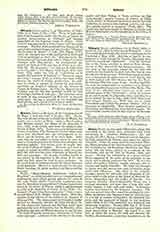

Menard, NICOLAS-HUGUES, of the Congregation of St. Maur, b. in Paris, 1585; d. January 21, 1644. His father was private secretary to Catherine de Medici, his mother was a native of Blois. After a liberal education Menard entered the Order of St. Benedict, February 3, 1607, at St. Denis, and made his religious profession September 10, 1612. In the next year he joined the reform movement of St. Vannes in Verdun which some years later developed into the Congregation of St. Maur; and he became one of its main helps. After some time he was called to Paris, where he soon became a favorite preacher and frequently occupied the principal pulpits. For sixteen years he taught rhetoric at the College of Clugny. By word and deed he sought to induce his fellow religious to unite an exemplary life with love for study especially of Church history and patrology. On account of failing health he was placed by his superiors in the abbey of St. Germain des Pres, where he lived in great seclusion. In his small circle of intimate friends the Jesuit Sirmond stood foremost. Menard is much praised for his profound learning, his great modesty and his wonderful memory.
Works: “Martyrologium Sanctorum ordinis St. Benedicti”, to which he added several biographies and explanatory notes which greatly enhance the value of the work (Paris, 1629); “Concordia regularum, auctore St. Benedicto Anianae abbate”, from a manuscript found in the Abbey of Fleury, which is supplemented by a life of St. Benedict of Aniane (Paris, 1638); “St. Gregorii I Papae Liber Sacramentorum”, from a manuscript Missal of St. Eligius (Paris, 1642). This also appears in the edition of the works of St. Gregory of the year 1705. The commentary on the book is highly praised by Muratori (Dissert. de rebus Uturgicis, ch,6), who states that Tomassi and Mabillon would have preferred the text of Pamelius, but the Maurists, when publishing the notes of Menard had also to use his text `De unico Dionysio Areopagita Athenarum et Parisiorum episcopo”, a defense of the identity of the Areo-pagite and first Bishop of Paris, written (at first anonymously) against Launoy, in defense of Millet (Paris, 1643); “S. Barnabw Apostoli (ut fertur) Epistola Catholica, ab antiquis olim ecclesiae patribus sub a usdem nomine laudata et usurpata” (Paris, 1645). The Greek text had been found by Sirmond at Rome, and Menard discovered a Latin translation at the Abbey of Corvey.
FRANCIS MERSHMAN

